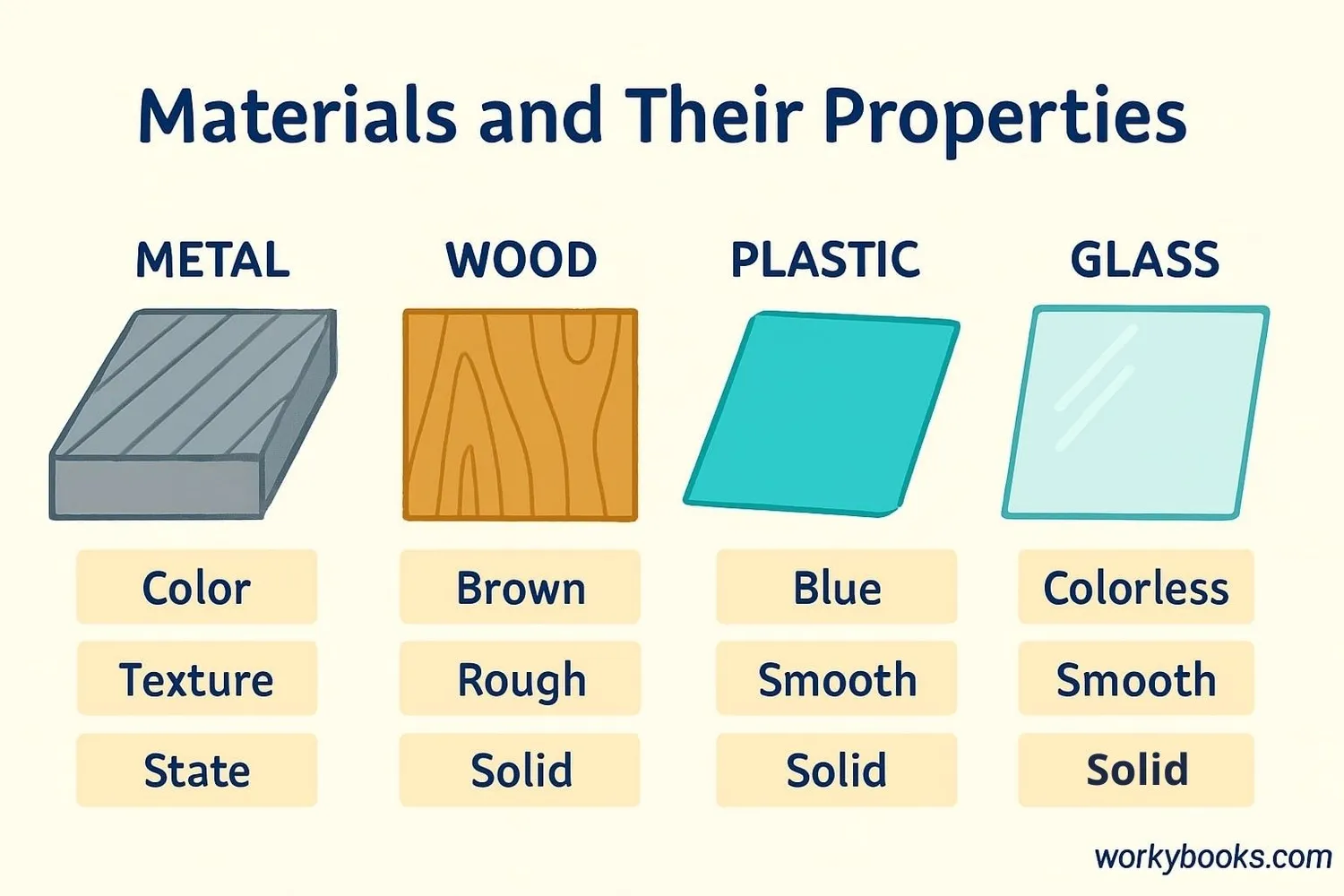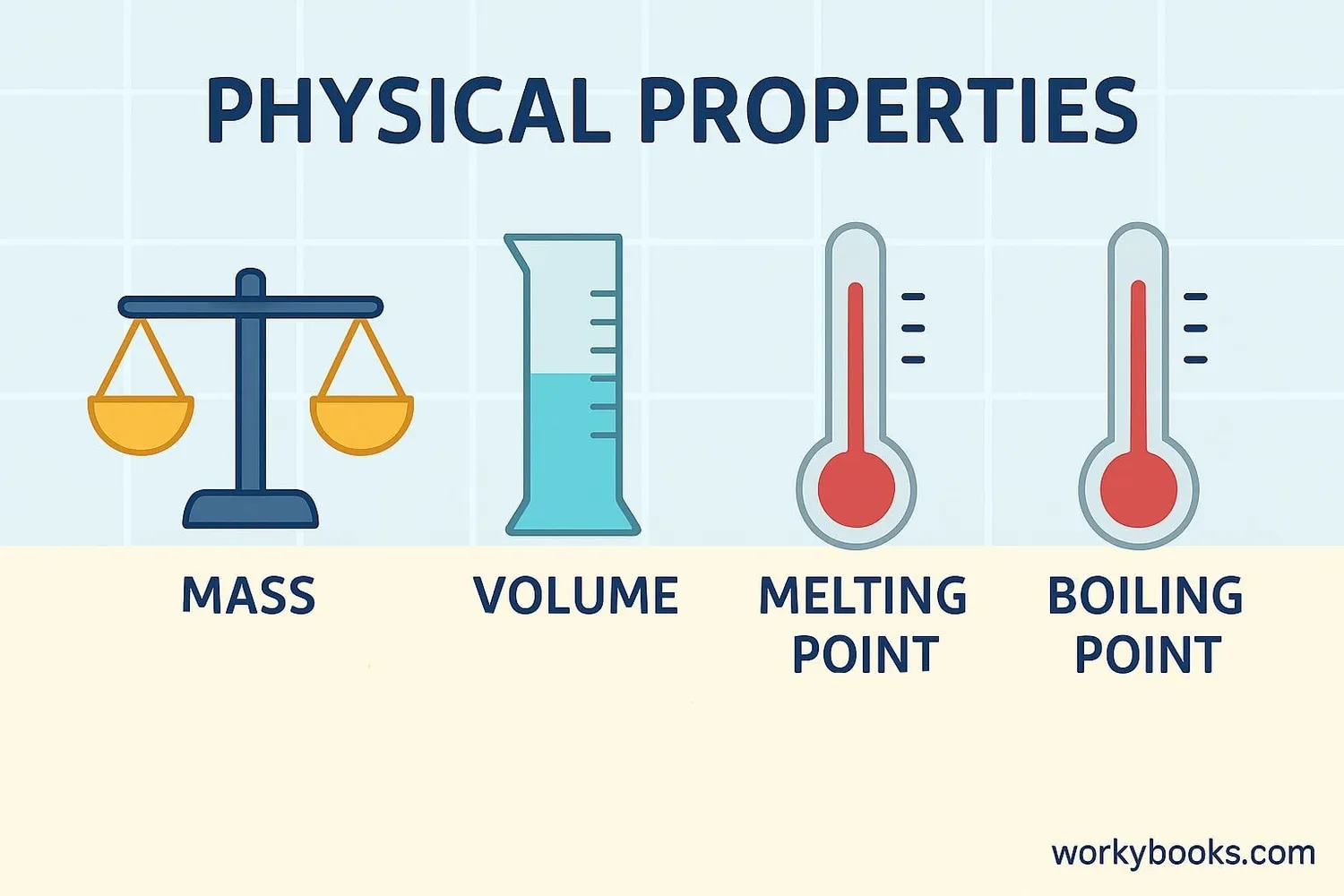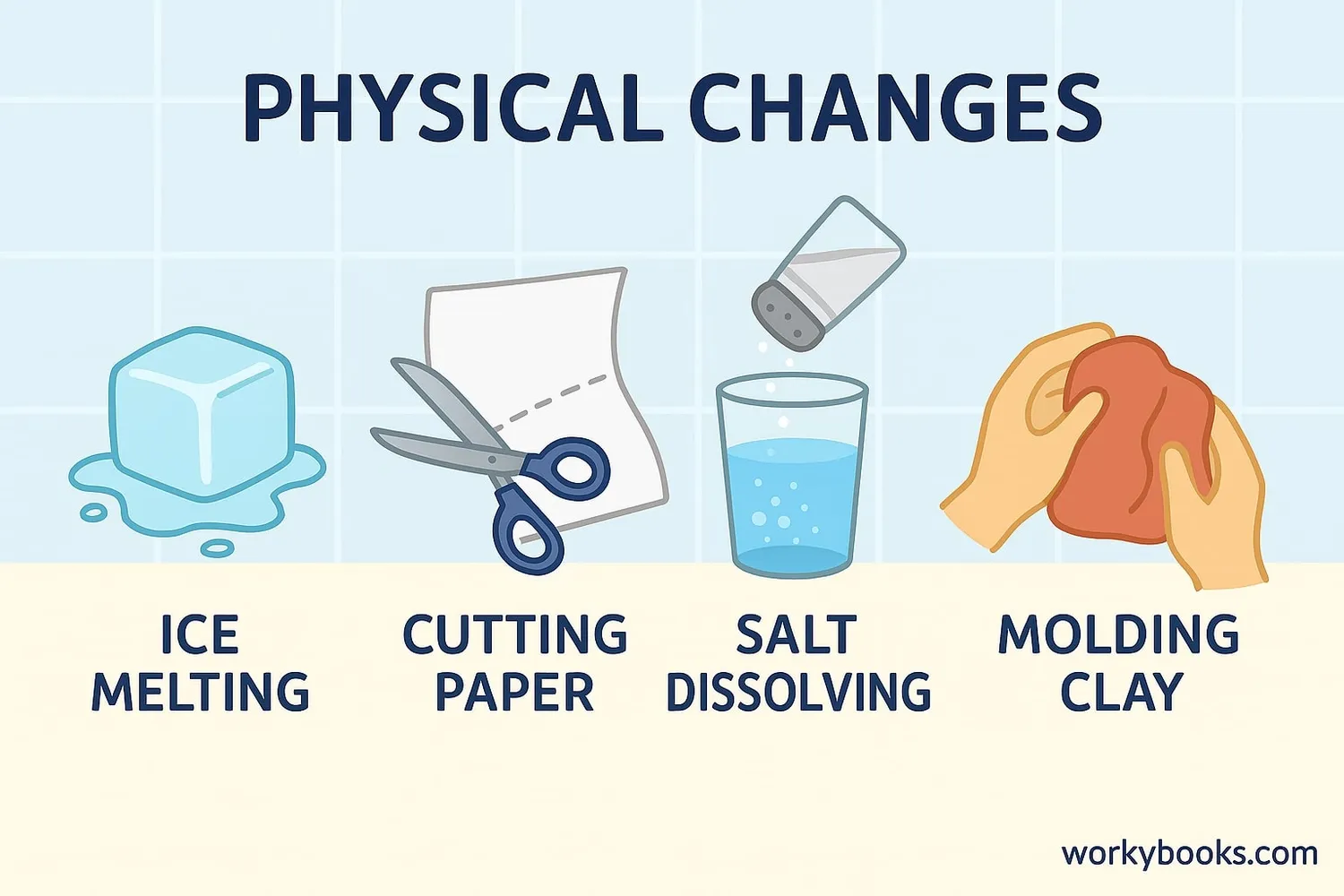Physical Properties of Matter - Definition, Examples, Quiz, FAQ, Trivia
Discover how we describe and measure the world around us
What Are Physical Properties?

Physical properties are characteristics of matter that we can observe or measure without changing what the matter is made of. They help us describe, identify, and classify different types of matter.
Think of physical properties as the "personality traits" of materials. Just like people have different heights, hair colors, and voices, materials have different colors, textures, weights, and other physical properties.
Science Fact!
Physical properties help scientists identify unknown substances and choose the right materials for different jobs!
Examples of Physical Properties

There are many different physical properties that help us describe matter. Here are some of the most important ones:
Mass
The amount of matter in an object. We measure mass using balances and scales, usually in grams or kilograms.
Volume
The amount of space an object takes up. We measure volume using rulers or graduated cylinders, in liters or cubic centimeters.
Density
How much mass is in a certain volume of a substance. Density = Mass ÷ Volume. Objects with higher density sink in fluids with lower density.
Melting Point
The temperature at which a solid becomes a liquid. For example, ice melts at 0°C (32°F).
Boiling Point
The temperature at which a liquid becomes a gas. Water boils at 100°C (212°F).
Solubility
How well a substance dissolves in another substance. Salt has high solubility in water, while sand does not.
Hardness
How resistant a material is to being scratched. Diamond is the hardest natural material.
Malleability
How easily a material can be hammered or pressed into thin sheets without breaking. Gold is very malleable.
Conductivity
How well a material allows heat or electricity to flow through it. Metals are good conductors.
Density Demonstration!
Try this: layer honey, water, and oil in a clear glass. They form layers because they have different densities!
Physical Changes

A physical change is a change in matter that affects its physical properties but does not change what the matter is made of. The substance itself remains the same, just its form or appearance changes.
Change of State
When matter changes between solid, liquid, and gas states (melting, freezing, evaporation, condensation)
Change of Shape
When matter is cut, torn, bent, or molded into different shapes
Dissolving
When a substance mixes evenly with another substance to form a solution
In physical changes, no new substances are formed. The changes are usually reversible. For example:
• Ice melting into water (can be frozen again)
• Paper being cut into pieces (can't be uncut, but still paper)
• Sugar dissolving in tea (can be evaporated to recover sugar)
This is different from chemical changes where new substances with different properties are formed.
Reversible Changes
Most physical changes are reversible. If you crumple a piece of paper, it's still paper. If you melt chocolate, it can harden again.
Physical Properties Quiz
Test your knowledge about physical properties with this quiz! Answer all 5 questions to see how much you've learned.
Frequently Asked Questions
Here are answers to some common questions about physical properties:
Fun Physical Properties Trivia
Discover some amazing facts about physical properties!
Density Champion
Osmium is the densest natural element on Earth! A cube of osmium measuring 15 cm on each side would weigh as much as an average adult person.
Extreme Temperatures
Tungsten has the highest melting point of all metals at 3,422°C (6,192°F)! That's about as hot as the surface of some stars.
Super Conductors
At extremely cold temperatures接近绝对零度, some materials become superconductors with zero electrical resistance, allowing electricity to flow perfectly!
Hardness Scale
The Mohs hardness scale measures mineral hardness from 1 (talc) to 10 (diamond). Your fingernail has a hardness of about 2.5, and a copper penny is about 3.


